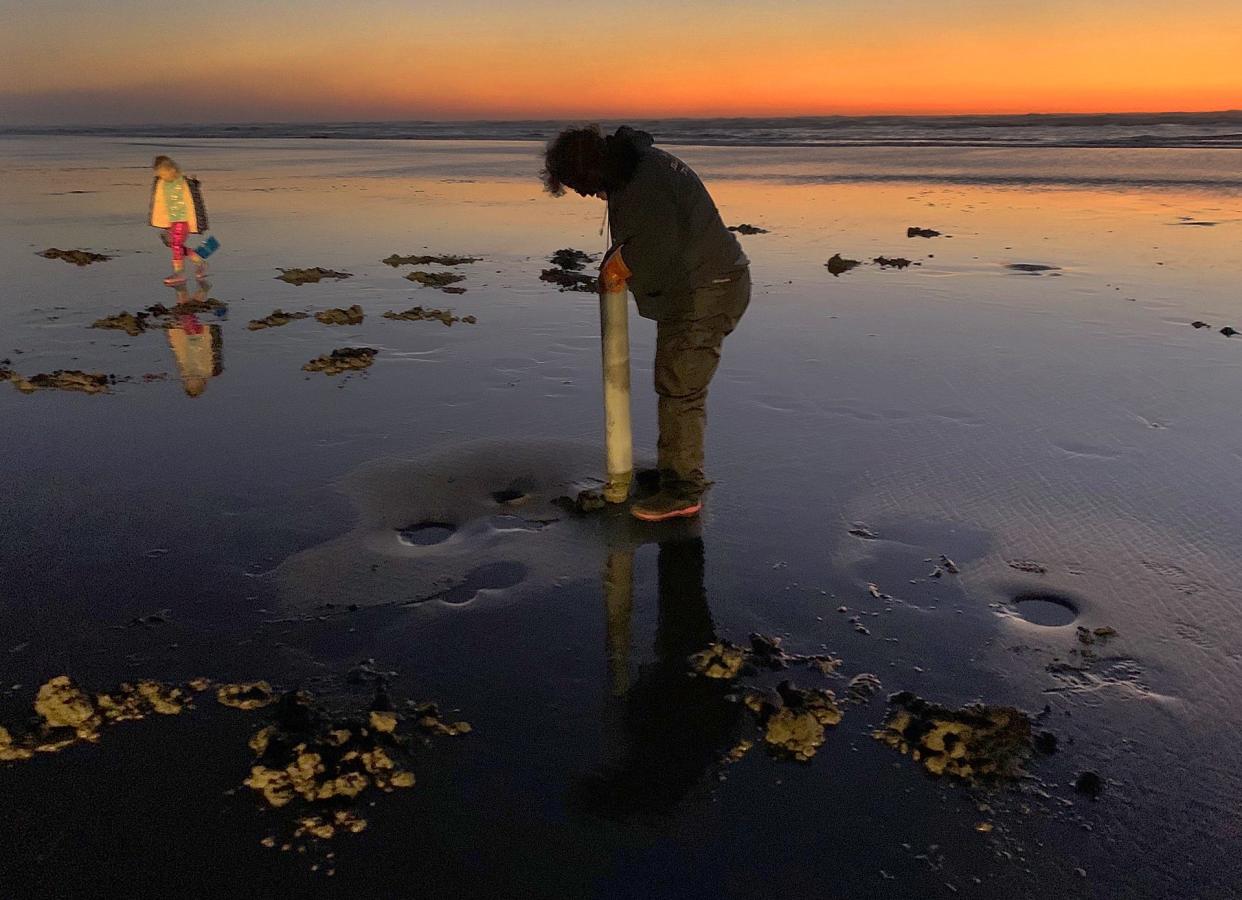Razor clamming reopens on central and northern Oregon Coast; mussels still prohibited

Razor clamming has reopened on the central and northern Oregon Coast after two tests showed biotoxin levels below the closure limit.
Razor clamming is open from Yachats to the Washington state line but is closed from Yachats to the California border. A coastwide ban on harvesting bay clams and mussels remains in place.
State officials had closed the entire coast to shellfish harvesting earlier this month after 21 people were sickened by paralytic shellfish poisoning after eating mussels harvested on the northern Coast.
Razor clams never showed toxin levels that would have been dangerous, but officials closed their harvest anyway out of "an abundance of caution since PSP levels had elevated very rapidly and were very high in other shellfish species," the Oregon Department of Fish and Wildlife said.
With two tests showing biotoxin levels below the closure limit for razor clams, their harvest was reopened earlier this week.
Current harvest closures and openings
All bay clamming remains closed coastwide for high levels of PSP. This includes all clam species in the bays.
All mussel harvesting remains closed coastwide for elevated levels of PSP.
Razor clamming is open from the Washington border to Yachats and closed from Yachats to the California border for high levels of PSP and domoic acid.
Crab harvesting remains open along the entire Oregon coast.
ODA commercial fisheries closures and openings
Tillamook Bay and Netarts: oyster fishery is open.
Umpqua River/Winchester Bay: oyster fishery is closed.
Coastwide: bay clam fishery is closed.
People should always call the Shellfish Safety Hotline (1-800-448-2474) before heading out to harvest shellfish or visit the ODA Recreational Shellfish Biotoxin Closures Webpage.
The Oregon Department of Agriculture will continue testing for shellfish toxins at least twice a month as tides and weather permit. Reopening an area closed for biotoxins requires two consecutive tests with results below the closure limit.
PSP is a natural marine biotoxin produced by some species of microscopic algae. Oregon has seen historic high levels of PSP since late May, leading to multiple closures in several shellfish species since May 23. Watch ODFW's Q&A with ODA and Oregon Health Authority for more information on PSP, shellfish poisoning symptoms, and shellfish testing.
Zach Urness has been an outdoors reporter in Oregon for 16 years and is host of the Explore Oregon Podcast. To support his work, subscribe to the Statesman Journal. Urness is the author of “Best Hikes with Kids: Oregon” and “Hiking Southern Oregon.” He can be reached at zurness@StatesmanJournal.com or (503) 399-6801. Find him on Twitter at @ZachsORoutdoors.
This article originally appeared on Salem Statesman Journal: Razor clamming reopens on central and northern Oregon Coast

